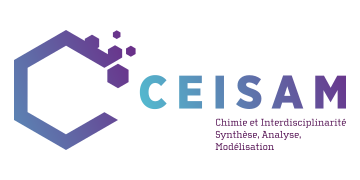Researchers at the CEISAM laboratory (CNRS/University of Nantes) and the Interdisciplinary Centre for Nanosciences in Marseille (CINaM, CNRS/Aix-Marseille University) have succeeded in stabilising a highly reactive reaction intermediate using weak intramolecular interactions.
Known as the Meisenheimer complex, this negatively charged and highly reactive intermediate has long been recognised by chemists in aromatic nucleophilic substitution reactions. However, it had never been isolated in the presence of destabilising and electron-donating substituents.
To achieve this, the chemists designed a specific ring-shaped molecular assembly, a macrocycle, into which they incorporated two Meisenheimer-type units. Crystallographic analysis of this macrocycle revealed the crucial role of intramolecular hydrogen bonds in stabilising the intermediate by extending the delocalisation of its negative charge.
On the one hand, the formation of this bis-Meisenheimer macrocycle results from the capture of cyanide ions by a precursor macrocycle known as an azacalixarene. This property is of particular interest for industries that need to control the cyanide content in their products.
On the other hand, cyanide acts here as a genuine molecular fuel: it triggers the formation of the Meisenheimer macrocycle, but its disappearance leads to the spontaneous dissipation of the compound, regenerating the azacalixarene precursor. Such a dynamic chemical system offers a promising approach to reproducing certain mechanisms observed in natural processes.
This work was recently published in Angew. Chem. Int. Ed.
https://onlinelibrary.wiley.com/doi/full/10.1002/anie.202511037

